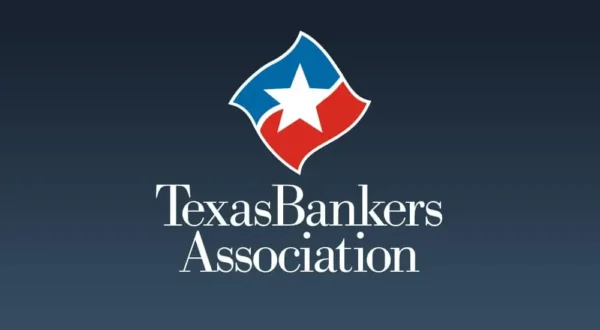Financial Statement & Cash Flow Analysis
Want to learn how to analyze business financial statements and tax returns in a compact, intense, case-based two-day session? Want to move beyond ratio analysis and into the operating, investing and financing cash flows of a business and how they impact loan repayment? This live workshop is your answer, whether you are new to lending and financial analysis, or even if you just need a refresher. This course is also highly recommended for bankers planning to attend a formal lending school. (Bring your calculator and pencil!
When
Where
TBA Headquarters
203 W 10th Street
Austin, Texas 78701
Agenda
Introduction to Financial Statements
• Identify the basic structure and purposes of financial statements and the three methods of accounting
How Business Financial Statements and Tax Returns are Constructed (Accounting Refresher)
• Compare and contrast cash and accrual accounting methods
• Construct the following for an example business (case study)
• Conventional balance sheet, income statement and statement of cash flows on both the cash and accrual basis
• Tax return balance sheet, income statement, Schedule M-1 and Schedule M-2 on the cash basis
• Describe the key differences in all three presentations of the financial performance of the example business (cash vs. accrual vs. cash/income tax basis)
• Identify the role and function of the Schedule K-1 that passes through income/expense and actual cash flow from the business to its owners
More on Accrual Accounting Used by Larger Businesses
• Key standards, limitations and alternatives or generally accepted accounting principles (GAAP)
• Why other comprehensive bases of accounting (cash and income tax) are appropriate for many smaller businesses
• Identify various levels of accountant-prepared financial statements (compilations, reviews and audits)
Ratio Analysis
• Guidelines for classifying and spreading data
• Key components of a balance sheet
• Calculate liquidity and leverage ratios for a business
• Key components of an income statement
• Calculate profitability and traditional cash flow measures
• Calculate efficiency and debt coverage ratios
• Use of industry and comparative data within financial analysis
Why You Need More Than Traditional Ratios and “Cash Flow” as Net Income + Depreciation + Interest Expense
• Evolution of Statement of Financial Accounting Standards (SFAS) 95 and the resulting Statement of Cash Flows (SCF), plus development of the Uniform Credit Analysis (UCA) model
• The true cash flow impact of changes in efficiency ratios
• Sources and uses of cash for both SCF and UCA, plus the three main categories of cash flow, and the indirect and direct methods for compiling a SCF
• Building an Accountant-Based Statement of Cash Flows (SCF)
• Construct a SCF on the indirect method from the Day 1 case study
• Construct the operating section of a SCF on the direct method as a bridge to the UCA model
Building, Understanding and Using the Banker-Based UCA Cash Flow Model
• Compare the formats of SCF and UCA, plus construct a UCA model from the Day 1 case study
• Compare key subtotals between a SCF and UCA (from case study)
• Identify the three basic questions for which the UCA model provides answers
• Identify the cash flow coverage ratio components imbedded within the UCA format
• Explain the cash flow effect of capital expenditures, adjusted for related long-term financing
• Re-position distributions/dividends within the UCA format in order to improve cash flow conclusions for privately-held businesses and a typical global analysis
• Compare SCF and UCA analytical conclusions with earlier conclusions from traditional ratio analysis
• Explain how commercial real estate (CRE) cash flow is different due to typical usage of single-asset holding entities with limited balance sheet cash flow implications (except for capitalized expenditures and owner distributions)
Program: 9:00 AM – 4:00 PM
Lunch: Noon – 1:00 PM
Credit analysts, community bankers, small business lenders, commercial lenders, branch managers that lend to business owners, private bankers, special assets officers, loan review specialists and others involved in business and commercial lending.
First Registrant: $850
Additional Registrant: $750
All Non-Members: $1,700
Register online or complete the attached form and submit via email. The fee includes access to the virtual seminar, program materials and session recordings.
IMPORTANT: Registration is per person. All attendees must be registered to ensure access to the program, materials, recorded content and to be eligible to receive CE credit.
Cancellation/substitution requests must be made in writing. Email requests to education@texasbankers.com. Full registration fees will be refunded if written notice is received no later than February 19, 2025. Substitutions are permitted without penalty.
Nearby Hotels:
The Otis Hotel
1901 San Antonio Street
Austin, Texas 78705
AC Hotel Austin-University
1901 San Antonio Street
Austin, Texas 78705
Moxy Austin-University
2552 Guadalupe Street
Austin, Texas 78705
Texas State Board of Public Accountancy: 14 CPE credit hours. There are no educational prerequisites.
Presenter

Richard Hamm
Richard Hamm has been training bankers for more than 20 years, including both creating and teaching courses for the American Bankers Association (ABA) and the Risk Management Association (RMA), plus regional banking schools (Graduate School of Banking – Wisconsin, Graduate School of Banking at Colorado, Southwestern Graduate School of Banking and Barret School of Banking – Memphis), numerous state banking and community banking associations and individual banks.




